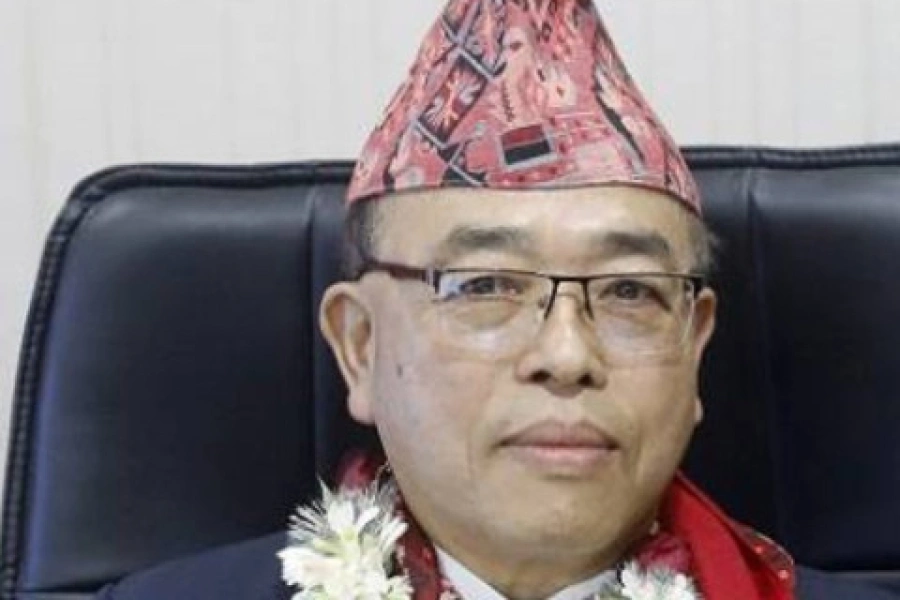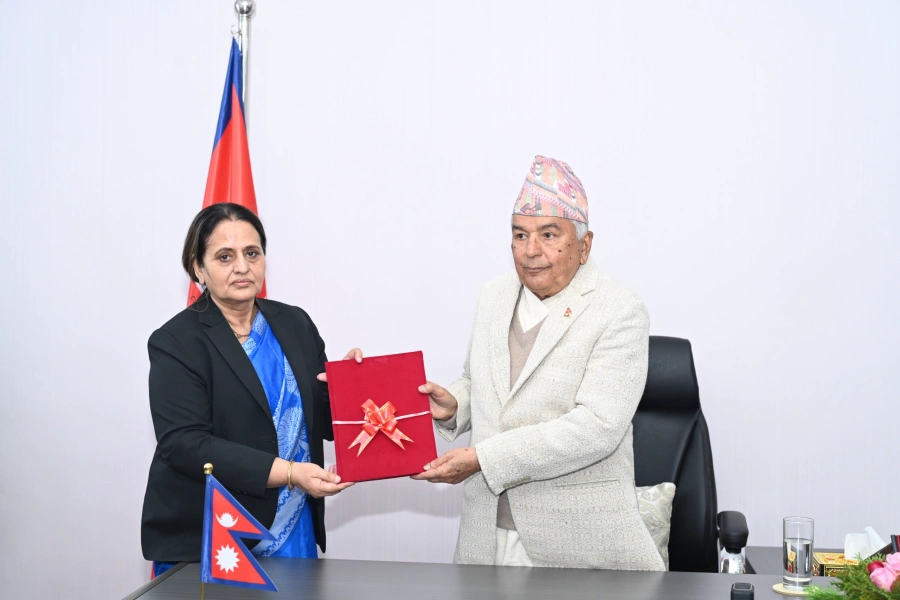RAJBIRAJ, Nov 21: With the parliamentary and provincial elections closing in, election fervor in Saptari, like other districts, is gaining momentum. Candidates have been meeting voters at their home, office, in farms - literally anywhere that is convenient for the latter. Along with urban areas, the atmosphere is equally vibrant in the remote villages of the district.
“Since the elections are just a few days away, we have intensified our election campaign activities,” said Dinesh Yadav of Nepali Congress, who is parliamentary election candidate from Saptari - 3. “When we are not able to meet voters at their residence we go wherever they are,” he added.
Since the elections have coincided with rice harvesting time in the district, candidates have been visiting farms to meet voters. “This is the peak hour for harvesting crops. Most of the population here are farmers, so we have to visit them in their farms,” Yadav stated.
There are four constituencies for central parliament and eight constituencies for provincial assembly in Saptari district. Earlier, there were six constituencies in total. With the rise in the number of constituencies as well as in the number of candidates, now the election campaign has become even costlier and challenging, political parties say.
Farming season prompts candidates to visit farms for votes

Madhes based parties and Madhesi candidate did not fare well in the second Constituent Assembly election, though they did pretty well in the first CA.
Some analysts claim that this time the public sentiment is with Madhesi candidates and Madhes based parties. Violent Madhes movement before and after the promulgation of the constitution in 2015 brought a kind of rift between the people of Madhes and with the ‘Kathmandu centric establishment’. Consistent effort by the Madhes based parties and leaders to amend constitution and their failure to do so far have also united people for Madhesi candidates, analysts note.
Earlier, Madeshi parties were reluctant to participate in the local level election. Their strong reservation resulted in late election in the province number two. Though they did not oppose the assembly and parliamentary elections, the formation of the left alliance and the ‘democratic’ alliance coupled with rebel candidates from their own parties have created difficulties for the Madhes based parties, despite public sympathy.
“All the candidates have been trying their best to make their campaigns more effective. People are also excited. The local level election was a huge event even though Madhes was reluctant about it at a earlier stage,” he said.
Yadav has personally met dozens of people in paddy field. He met and greeted some of them while they were riding on their carts on their way to their farms or home. “They feel good that they are being approached this way. In the brief conversation, we not only urge them to vote for us, but also tell them how to vote,” Yadav said. He added that meeting the voters personally make them responsible and will help in bringing them to poll booths on the election day.
“We have been meeting elderly people, youths, men, women, all and urging them to vote. Every vote counts,” Yadav said.
There is fierce competition between Nepali Congress, left alliance and Madhes alliance in all constituencies. While the ground for Madhes alliance could be very strong, the alliance between left forces has made it bit challenging, according to locals. Moreover, the parties, both the Nepali Congress and the left alliance have picked maximum Madhesi candidate. Most of them are former cadres of the RJP and Madhesi Jana Adhikar Forum who had left party their parties at the last minute to join left alliance and the congress after they failed to get ticket from their party.
Quitting of some of the influential candidates might cost it dearly to the Madhesi alliance, according to locals. “Nevertheless, people are concerned about Madhes issues, and they trust Madhesi leaders more than others,” Yadav stated. z



































